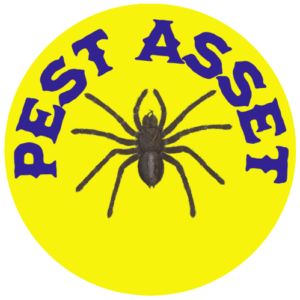Spiders: Everything You Need to Know
Introduction
Spiders are fascinating arthropod creatures that can be found all over the world in a variety of habitats. There are over 45,000 known species, ranging dramatically in size, appearance, and behavior. Some species have bodies smaller than a grain of rice while others have leg spans over 10 inches. Their colors can range from dull tan and brown to vivid and glossy with intricate patterns. While only a small percentage of spiders have venom potent enough to cause harm to humans, they conjure uneasiness in many. But these often misunderstood creatures play vital ecological roles.
Types of Spiders
There are two main types of spiders – web builders and wandering spiders. Web builders construct sticky silk traps to capture prey while wandering spiders actively hunt instead.
The most common types found around homes in the United States include:
- House Spiders: As their name implies, house spiders often dwell inside homes. One of the most common house spiders is the American house spider. They have elongated bodies reaching up to around 3/4 inch long and hairy, spindly legs about the same length. Their color pattern features forelegs darker than the hind ones with gray and black banding on their abdomens. House spiders help control pest populations indoors.
- Jumping Spiders: There are over 500 species of jumping spiders in North America. As their name suggests, jumping spiders can leap distances far exceeding their body length to ambush prey. They have excellent eyesight for hunting and navigating compared to other types of spiders. Most measure less than 1/5 inch but some tropical species grow over an inch long.
- Orb Weavers: Orb weavers spin large, intricate, circular webs with a heavy zig-zag of silk near the center where they sit waiting to ambush prey. The cross spider is one common orb weaver that creates its web in gardens. Orb weavers vary greatly in size, shape, and coloration. Golden silk orb weavers can have leg spans exceeding 5 inches.
- Wolf Spiders: Wolf spiders include over 2,300 species globally. Most are medium-sized and hairy with camouflage color patterns. As wandering hunters, wolf spiders actively chase down prey. Females often carry egg sacs attached to their spinnerets until the eggs hatch.
Spider Behavior
Most spiders practice anti-social behavior towards each other. They are highly territorial and will chase, threaten, and even kill other spiders that wander into their domain. Their first defense is often to showcase their fangs and salivate venom as a warning. If that doesn’t work, they may lunge, scratch, and bite an intruder.
Spiders are primarily nocturnal or crepuscular (active around dawn/dusk), spending daylight hours hiding. They emerge under cover of darkness to build webs and hunt. With their eight eyes, most spiders have exceptional eyesight to navigate and target prey in dim conditions. Vibrations on threads of their webs alert them to trapped prey or threats.
Spider Reproduction
All spiders reproduce sexually with both male and female sexes. Most mate only once annually, though some species can reproduce multiple times per year. In most species, females are substantially larger than the males.
To mate, a male spider must cautiously approach and subdue the female to insert sperm into her reproductive organs with his pedipalps located at the base of his fangs. In some species, the females devour the males afterwards!
Females lay eggs several days to weeks after mating. The eggs develop in silken cocoons the female constructs. She will vigilantly stand guard or carry the egg sac with her fangs or attach it to her spinnerets until the spiderlings emerge.
Spiders and Humans
Less than 1% of spiders have venom capable of causing harm to humans. In the U.S, the spiders of most medical significance are the black widow and brown recluse spiders. Bites from other species typically cause short-term pain and swelling. Their venom works to paralyze and dissolve insect prey, not serve as a defense against large animals like humans.
Most spiders play a beneficial role in controlling insect pest populations around homes and gardens that can spread diseases and damage crops. Their venom originated as an adaptation for catching prey – not a defense against predators. Bites typically only happen if a spider is accidentally squeezed or trapped against bare skin.
Preventing Spiders in Homes
There are several proactive steps homeowners can take to reduce spiders inside:
- Remove vegetation, ivy, wood piles, and other hiding spots near foundations
- Prune trees/shrubs to prevent contact with the structure
- Seal cracks and openings throughout exterior walls
- Use yellow porch lights or sodium vapor bulbs to deter nighttime insects
- Eliminate indoor insect infestations
- Use pest control measures
- Spot-treat visible spiders and webs with a vacuum
Conclusion
Spiders play vital roles in the environments they inhabit. Their specialized hunting skills help suppress insects that can spread disease and damage agriculture. While a small minority can inflict painful bites, most pose no threat to humans and will only bite as an absolute last resort. Proper identification and proactive pest control measures can help homeowners comfortably coexist with these fascinating creatures.



